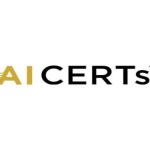Launching a SaaS product often takes months of planning, coding, and iteration. Yet today, thanks to powerful AI-driven solutions, entrepreneurs can rapidly design, test, and launch a Minimum Viable Product (MVP) in as little as two weeks. The key lies in combining agile workflows with AI-powered development tools that simplify coding, automate repetitive tasks, and speed up decision-making.
A SaaS MVP doesn’t need to be perfect; it needs to be functional enough to solve a problem and test market demand. AI helps streamline this process by reducing manual effort and providing intelligent insights that accelerate the journey from concept to execution.
Why AI Speeds Up SaaS Development
Traditional software development often involves long coding cycles, frequent debugging, and multiple rounds of user testing. AI tools drastically reduce this timeline by generating clean code, suggesting improvements, and even assisting in design decisions.
By adopting modern practices such as automated prototyping, rapid deployment, and AI-assisted testing, developers can shift their focus from technical bottlenecks to delivering customer value. This allows startups to validate ideas quickly and gather user feedback earlier in the process.
Building Your Knowledge Base
Before diving into tools, aspiring developers should focus on sharpening their foundation in AI-assisted coding. Many professionals now choose to learn AI programming online, where they can explore real-world case studies and guided projects. These programs provide a structured way to practice coding, understand AI workflows, and apply concepts to SaaS development scenarios.
This step ensures that developers don’t just rely on tools blindly but also understand the logic behind them, enabling more efficient problem-solving.
Choosing the Right Toolkit
The heart of building a SaaS MVP in two weeks lies in selecting the right set of AI-powered platforms. Enrolling in an AI developer tools course is a practical way to explore different frameworks, libraries, and applications that accelerate development.
Some of the most widely used tools in MVP creation include:
- AI coding assistants that generate and debug code automatically
- Low-code and no-code platforms for rapid prototyping
- Automated testing systems that detect issues in real time
- Cloud-based deployment services for quick scalability
A well-chosen toolkit saves both time and effort, helping teams focus on refining their product rather than fixing avoidable technical issues.
Professional Growth Through Credentials
For those looking to strengthen their professional credibility, pursuing an AI development certification can be a valuable investment. Certification ensures that developers are trained in industry-relevant tools, frameworks, and workflows while also signaling expertise to employers, clients, and investors.
This added layer of trust can make a difference when pitching a SaaS MVP to stakeholders, as it shows that the developer is not only capable but also formally recognized in the field.
Structured Learning for Faster Outcomes
Speed is a crucial factor in building MVPs, and structured guidance makes the process even smoother. Many professionals opt for online AI developer training, which combines flexibility with real-world projects. Through live sessions, mentorship, and peer collaboration, these training programs prepare learners to apply AI to SaaS use cases effectively.
By applying lessons from such training directly to MVP projects, developers can avoid trial-and-error delays and move quickly toward building functional prototypes.
Transitioning Into a Career Path
For many, building a SaaS MVP is not just about launching a product but also about advancing their professional journey. The skills gained along the way open doors to new opportunities, making it possible to become an AI developer who can contribute to innovation across multiple industries.
From healthcare applications to e-commerce solutions, the demand for AI-driven SaaS platforms is only growing. Developers who can combine rapid prototyping with AI efficiency stand at the forefront of this transformation.
Iterating for Success
Building a SaaS MVP in two weeks is not the end goal; it’s the beginning of a cycle. Once the MVP is launched, the next steps involve gathering user feedback, testing assumptions, and refining features. AI continues to play a role here by analyzing user behavior, predicting needs, and suggesting improvements.
The true success of a SaaS MVP comes not from building fast but from building smart—using AI to make every iteration more valuable than the last.
Conclusion
Creating a SaaS MVP in just two weeks may have seemed impossible a few years ago, but AI tools have made it achievable. By combining intelligent coding assistance, automated testing, and cloud-based deployment, developers can drastically cut down development time while maintaining quality. The journey doesn’t stop at launch—continuous refinement, guided by AI, ensures that the MVP evolves into a product with real market impact.
The future of SaaS development belongs to those who embrace AI not just as a tool but as a partner in innovation.






Comments